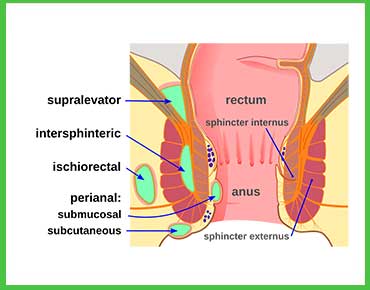
Perianal Abscess is infected, usually painful, pus-filled abscesses are localized just outside the anal verge as a result of obstruction of the anal gland or bacterial invasion. Symptoms include a swollen, erythematous, and tender bump, severe pain, fever, and discomfort during bowel movements. Poor hygiene, trauma to the anal region, inflammatory bowel diseases, and compromised immunity are just some causes. If untreated, it may progress to formation of a fistula-an abnormal communication between anal canal and skin. Incision and drainage, antibiotics, and careful wound care. Early intervention will prevent complications and speed healing.
Most times, it is secondarily infected and collects pus. Contributing risk factors for the formation of perianal abscesses are poor hygiene, chronic constipation, diarrhea, inflammatory bowel diseases, and immunosuppression. General list of people potentially more susceptible include persons having diabetes, or HIV, or undergoing chemotherapeutic treatment, etc. Bacterial invasion during anal fissures or subsequent trauma than injury, surgery, or anal sex can lead to bacterial invasion resulting in an infection. Untreated, the abscess can be spread into deeper structures, leading to complications like fistula.
Treatment involves an incision and drainage (I&D), to get rid of pus and relieve pain. Antibiotic treatment may be instituted when the infection is bad or there is an immunocompromised state. Warm sitz baths are helpful in minimizing the swelling and discomfort. Surgical intervention is indicated in chronic or recurrent cases to eliminate the underlying fistulas. Hygiene, a high-fiber diet, and adequate fluid intake can assist in healing and preventing recurrence.
